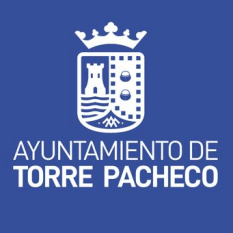Blog
»
{{catList[367].label}}
» Isaac Peral
Isaac Peral

Isaac Peral y Caballero was a scientist, sailor, soldier of the Spanish Navy and inventor of the first torpedo submarine, better known as the Peral submarine.
He was born on June 1, 1851 in Cartagena, into a modest family. His parents were Juan Manuel Peral y Torres, Captain of the Marine Infantry, and Isabel Caballero. He had two brothers, Pedro and Manuel, who also belonged to the Spanish Navy.
He grew up near a gunpowder factory for Philip II's artillery, shipyards and a supply depot for the Navy, where he was able to observe various merchant and warships that helped awaken his vocation.
For this reason, his mother decided to send a request to Queen Elizabeth II so that Isaac, at just eight years old, would be a Navy candidate and have the right to wear the corporation's uniform with the commitment to enter the Naval School as soon as possible. This request was granted in 1865, when he was at the legal minimum age.
He studied until December 7, 1866.
On January 21, 1867, by orders from above, he embarked on the corvette Villa de Bilbao, making several trips. In April of the same year, he sailed the corvette, arriving three days later in the port of Malaga. He visited Santa Pola, Rosas, Alicante, Barcelona, Palma de Mallorca, Mahon and Cartagena, where he had the opportunity to be on the last Spanish ship of the line, the “Isabel II”, which remained as a pontoon in the arsenal.
During his 25 years of service, he sailed 32 ships, spent 16 years on board and obtained essential theoretical and practical knowledge to arouse his interest in creating inventions that would benefit the development of shipping activities.
Manuel de la Pezuela, the Minister of the Navy, took the project from him, ordered several preliminary tests and declared it a military secret.
However, after several sabotages, new ministers decided to end the tests, causing the project to be delayed. The queen regent, Maria Christina of the Two Sicilies, decided to intervene in the case and supported Peral to speed up the process and manufacture the submarine.
Finally, on September 8, 1888, the submarine was publicly presented, with 87 tons, 60-horsepower electric motors, electric power to achieve a speed of 10 miles per hour during a 50-hour march, and space for eight crew members.
It managed to submerge itself in the waters of the Arsenal de La Carraca, Cadiz. The project cost 300,000 pesetas, which was considered a great investment for the Spanish Navy.
Isaac Peral also published several investigations on algebra, geometry and hurricanes. Other inventions of his were hydrographic charts, the electric accumulator, the boat slipway, the electric elevator, the electric machine gun and the first power lines in Spain.
Isaac Peral y Caballero died at the age of 43 due to skin cancer on May 22, 1895 in the city of Berlin.
He was born on June 1, 1851 in Cartagena, into a modest family. His parents were Juan Manuel Peral y Torres, Captain of the Marine Infantry, and Isabel Caballero. He had two brothers, Pedro and Manuel, who also belonged to the Spanish Navy.
He grew up near a gunpowder factory for Philip II's artillery, shipyards and a supply depot for the Navy, where he was able to observe various merchant and warships that helped awaken his vocation.
Military career
He was influenced by his father, who also belonged to the maritime world and travelled to various points in Spain. Therefore, the child took a general exam to opt for admission to the Naval School. The court called Juan Manuel Peral and notified him of the outstanding results of his son, who requested a voluntary assignment to Cuba in 1860, with the intention of being able to pay for Isaac Peral's career. However, on that trip, his father passed away.For this reason, his mother decided to send a request to Queen Elizabeth II so that Isaac, at just eight years old, would be a Navy candidate and have the right to wear the corporation's uniform with the commitment to enter the Naval School as soon as possible. This request was granted in 1865, when he was at the legal minimum age.
Featured studies
He began his studies and was enthusiastic about Serret's knowledge of arithmetic, Brior's algebra and Rouché and Comberousse's geometry. He demonstrated his mastery of these subjects and the following year achieved the rank of second-class midshipman. His companions nicknamed him "deep Isaac".
He also showed interest in subjects such as shipbuilding, pilotage, naval history, manoeuvring, astronomy, physics, steam engines, mechanics and Spanish history.
He also showed interest in subjects such as shipbuilding, pilotage, naval history, manoeuvring, astronomy, physics, steam engines, mechanics and Spanish history.
On January 21, 1867, by orders from above, he embarked on the corvette Villa de Bilbao, making several trips. In April of the same year, he sailed the corvette, arriving three days later in the port of Malaga. He visited Santa Pola, Rosas, Alicante, Barcelona, Palma de Mallorca, Mahon and Cartagena, where he had the opportunity to be on the last Spanish ship of the line, the “Isabel II”, which remained as a pontoon in the arsenal.
During his 25 years of service, he sailed 32 ships, spent 16 years on board and obtained essential theoretical and practical knowledge to arouse his interest in creating inventions that would benefit the development of shipping activities.
Isaac Peral's creations
Because of a possible confrontation with the Germans over possession of the Carolinas archipelago, the inventor felt duty-bound to expose his knowledge to his superiors and the government by showing his torpedo submarine designs.
In 1888, thanks to his curiosity and ingenuity, he invented the first electric-powered submarine that could launch torpedoes, long before it became the greatest weapon of the 20th century.
In 1888, thanks to his curiosity and ingenuity, he invented the first electric-powered submarine that could launch torpedoes, long before it became the greatest weapon of the 20th century.
However, after several sabotages, new ministers decided to end the tests, causing the project to be delayed. The queen regent, Maria Christina of the Two Sicilies, decided to intervene in the case and supported Peral to speed up the process and manufacture the submarine.
Finally, on September 8, 1888, the submarine was publicly presented, with 87 tons, 60-horsepower electric motors, electric power to achieve a speed of 10 miles per hour during a 50-hour march, and space for eight crew members.
It managed to submerge itself in the waters of the Arsenal de La Carraca, Cadiz. The project cost 300,000 pesetas, which was considered a great investment for the Spanish Navy.
Isaac Peral also published several investigations on algebra, geometry and hurricanes. Other inventions of his were hydrographic charts, the electric accumulator, the boat slipway, the electric elevator, the electric machine gun and the first power lines in Spain.
Isaac Peral y Caballero died at the age of 43 due to skin cancer on May 22, 1895 in the city of Berlin.
Activities in the region of Murcia
Share Article
More Articles











